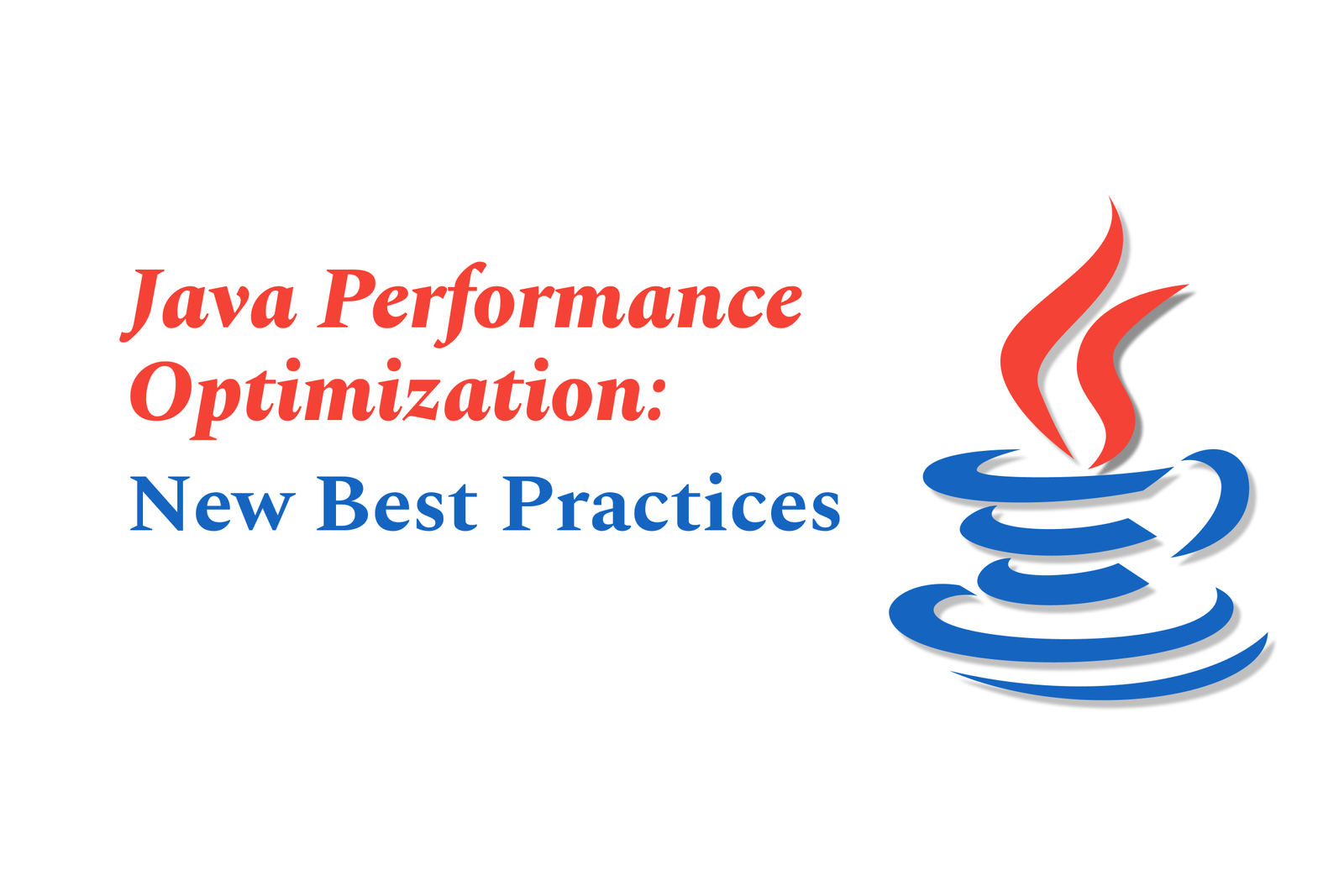Java performance optimization: new best practices
Java performance optimization focuses on enhancing application speed and efficiency through modern JVM tuning, advanced profiling tools, realistic load testing, and cloud-based scalability techniques. These best practices ensure robust, scalable, and high-performing Java applications.
Java Performance Optimization: New Best Practices
1 ) Understanding Java Performance Optimization
Java performance optimization involves techniques to write faster, more efficient code while tuning the Java Virtual Machine (JVM) to improve application speed and reduce resource consumption. It is an evolving discipline that requires continuous learning and experimentation.
2 ) Key Areas for Optimization
JVM Tuning: Adjusting JVM configurations such as garbage collection, heap size, and continuations to tune performance based on specific application needs.
Profiling and Bottleneck Analysis: Using profilers to identify which parts of the code or queries slow down the application the most.
Testing Under Load: Employing load, stress, spike, and endurance testing to simulate various performance scenarios and identify scalability limits.
3 ) Best Practices in Java Profiling
Use Modern Profilers: Popular tools include YourKit, VisualVM, JProfiler, IntelliJ Profiler, Async Profiler, Arthas, and Digma Continuous Feedback. Each offers unique insights into CPU usage, memory allocation, and scaling issues.
Combine Tools for Efficiency: Use traditional profilers alongside observability tools like Digma to accelerate data analysis and pinpoint performance bottlenecks faster.
Prioritize Sampling over Instrumentation: Sampling profilers reduce runtime overhead by periodically capturing execution snapshots, while instrumentation profilers provide detailed data but may impact application speed.
4 ) Performance Testing Methodologies
Load Testing: Assessing application behavior under expected user loads.
Stress Testing: Testing application limits under extreme conditions.
Spike Testing: Evaluating response to sudden increases in load.
Endurance Testing: Measuring performance over extended durations.
Chaos Engineering: Injecting failures to test system resilience and recovery.
5 ) Leveraging Cloud and Infrastructure Capabilities
Parallelization and Scalability: For systems like Amazon S3, distributing loads across prefixes allows scaling to thousands of concurrent requests to optimize throughput.
Caching and Edge Computing: Utilizing services like Amazon CloudFront or ElastiCache to reduce latency and increase data transfer speeds for cloud based Java applications.
Transfer Acceleration Technologies: Employing mechanisms such as S3 Transfer Acceleration to speed up data transport, especially over long distances.
6 ) Avoiding Common Pitfalls
Beware of Microbenchmarks: Isolated benchmarks may mislead; real world performance should be prioritized.
Control Variability: Stable environments and consistent test conditions yield reliable performance data.
Use Statistical Analysis: Performance data should be interpreted with proper statistical methods to make informed tuning decisions.
7 ) Continuous Learning and Experimentation
Developers are encouraged to experiment independently with JVM settings, profiling tools, and optimization techniques, especially if they lack professional exposure to performance tuning tasks. Watching expert talks, practicing with open source profilers, and analyzing real application data are good starting points.
8 ) Summary
Maximizing Java application performance today requires a combination of modern profiling tools, realistic testing methodologies, JVM tuning expertise, and leveraging cloud infrastructure optimizations. Adopting these new best practices ensures efficient, scalable, and responsive Java applications in varied environments.
https://justacademy.in/news-detail/android-accessibility-compliance-news
https://justacademy.in/news-detail/swift-6.1-preview:-exciting-features-coming-soon
https://justacademy.in/news-detail/android-split-screen-multitasking-news
https://justacademy.in/news-detail/react-native-vs-flutter:-hiring-trends-in-india
https://justacademy.in/news-detail/flutter-on-raspberry-pi:-new-examples
Related Posts
In 2025, top Angular libraries offer modern, feature-rich components and tools for building dynamic web apps. From powerful data grids to low-code platforms like UI Bakery, these libraries enhance development speed, UI design, and scalability, making them essential for Angular developers.
Migrating from AngularJS to Angular 17 involves gradually upgrading your app by running both frameworks together using tools like ngUpgrade, rewriting components in TypeScript, and adopting Angular’s modern architecture to enhance performance, maintainability, and long-term support.
Angular state management tools help organize and handle app data efficiently, improving scalability and maintainability. Popular options include NgRx for robust, RxJS-based patterns, and newer Signal Store solutions that offer simpler, reactive approaches integrated tightly with Angular’s latest features.
RxJS in Angular empowers developers to manage asynchronous data streams with powerful operators like `forkJoin`, `combineLatest`, and `zip`. Mastering these key operators in 2025 is essential for building efficient, reactive applications that handle complex event sequences seamlessly.
Angular performance optimization in 2025 focuses on improving app speed and responsiveness by using techniques like OnPush change detection, lazy loading, efficient data caching, and AOT compilation. These practices reduce load times, enhance user experience, and ensure scalable, fast Angular applications.
In 2025, Angular remains preferred for large-scale, enterprise apps with its robust, all-in-one framework, while Vue attracts developers seeking simplicity and fast development for smaller projects. Both frameworks excel, with choice driven by project needs and team expertise.
Angular Signals are a new reactive primitive in Angular 16 that enable fine-grained, efficient change detection by automatically tracking dependencies and updating only affected parts of the UI. They simplify state management and boost app performance, revolutionizing Angular's reactivity model.
Angular interview questions to prepare in 2025 focus on core concepts like components, directives, data binding, routing, and dependency injection, along with TypeScript mastery and latest Angular features to ensure strong practical knowledge for building scalable, efficient web applications.
AngularJS reached its official end of support in January 2022, meaning no further updates or security patches. To ensure app security and performance, developers should consider migrating to modern Angular versions or seek third-party long-term support options if immediate migration isn’t possible.
The Angular Roadmap 2025 highlights upcoming features focused on improving developer experience and performance, including zoneless Angular, Signals integration, enhanced Forms, async data handling, improved HMR, and expanded Angular Material/CDK enhancements, driving modern, efficient web app development.










